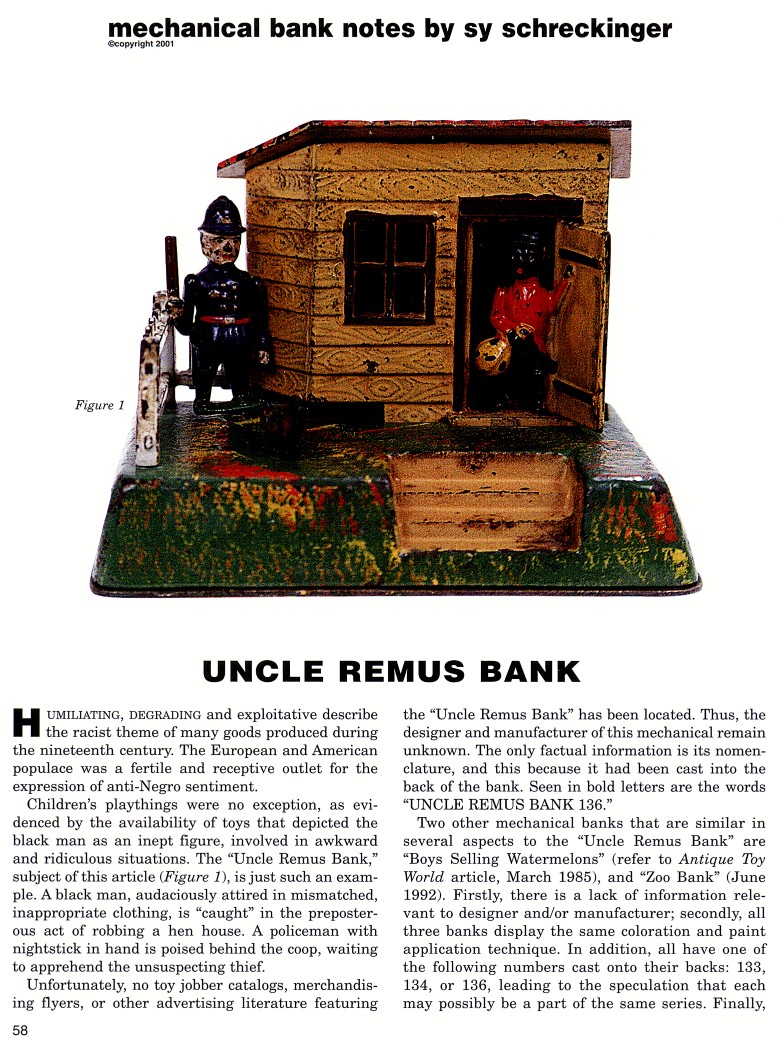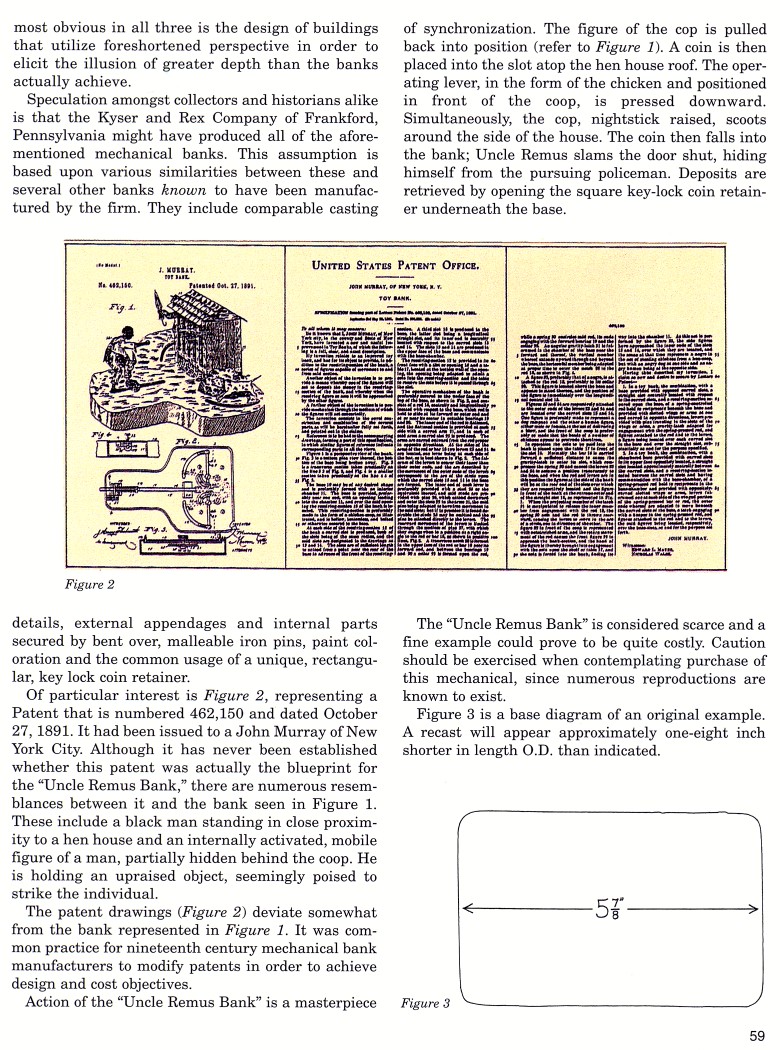|
Uncle Remus Bank
by Sy Schreckinger – ANTIQUE TOY WORLD Magazine – June, 2001
Humiliating, degrading and exploitative describe
the racist theme of many goods produced during the nineteenth century. The
European and American populace was a fertile and receptive outlet for the
expression of anti-Negro sentiment.
Children's playthings were no exception, as evidenced by the
availability of toys that depicted the black man as an inept figure,
involved in awkward and ridiculous situations. The "Uncle Remus Bank,"
subject of this article (Figure 1), is just such an example. A black man,
audaciously attired in mismatched, inappropriate clothing, is "caught" in
the preposterous act of robbing a hen house. A policeman with nightstick
in hand is poised behind the coop, waiting to apprehend the unsuspecting
thief.
Unfortunately, no toy jobber catalogs, merchandising flyers, or other
advertising literature featuring the "Uncle Remus Bank" has been located.
Thus, the designer and manufacturer of this mechanical remain unknown. The
only factual information is its nomenclature, and this because it had been
cast into the back of the bank. Seen in bold letters are the words "UNCLE
REMUS BANK 136."
Two other mechanical banks that are similar in several aspects to the
"Uncle Remus Bank" are "Boys Selling Watermelons" (refer to Antique Toy
World article, March 1985), and "Zoo Bank" (June 1992). Firstly, there is
a lack of information relevant to designer and/or manufacturer; secondly,
all three banks display the same coloration and paint application
technique. In addition, all have one of the following numbers cast onto
their backs: 133, 134, or 136, leading to the speculation that each may
possibly be a part of the same series. Finally, most obvious in all three
is the design of buildings that utilize foreshortened perspective in order
to elicit the illusion of greater depth than the banks actually achieve.
Speculation amongst collectors and historians alike is that the Kyser
and Rex Company of Frankford, Pennsylvania might have produced all of the
aforementioned mechanical banks. This assumption is based upon various
similarities between these and several other banks known to have been
manufactured by the firm. They include comparable casting details,
external appendages and internal parts secured by bent over, malleable
iron pins, paint coloration and the common usage of a unique, rectangular,
key lock coin retainer.
Of particular interest is Figure 2, representing a Patent that is
numbered
462,150 and dated October 27, 1891. It had been issued to a John
Murray of New York City. Although it has never been established whether
this patent was actually the blueprint for the "Uncle Remus Bank," there
are numerous resemblances between it and the bank seen in Figure 1. These
include a black man standing in close proximity to a hen house and an
internally activated, mobile figure of a man, partially hidden behind the
coop. He is holding an upraised object, seemingly poised to strike the
individual.
The patent drawings (Figure 2) deviate somewhat from the bank
represented in Figure 1. It was common practice for nineteenth century
mechanical bank manufacturers to modify patents in order to achieve design
and cost objectives.
Action of the "Uncle Remus Bank" is a masterpiece of synchronization.
The figure of the cop is pulled back into position (refer to Figure 1). A
coin is then placed into the slot atop the hen house roof. The operating
lever, in the form of the chicken and positioned in front of the coop, is
pressed downward. Simultaneously, the cop, nightstick raised, scoots
around the side of the house. The coin then falls into the bank; Uncle
Remus slams the door shut, hiding himself from the pursuing policeman.
Deposits are retrieved by opening the square key-lock coin retainer
underneath the base.
The "Uncle Remus Bank" is considered scarce and a fine example could
prove to be quite costly. Caution should be exercised when contemplating
purchase of this mechanical, since numerous reproductions are known to
exist.
Figure 3 is a base diagram of an original example. A recast will
appear approximately one-eight inch shorter in length O.D. than indicated.
|


